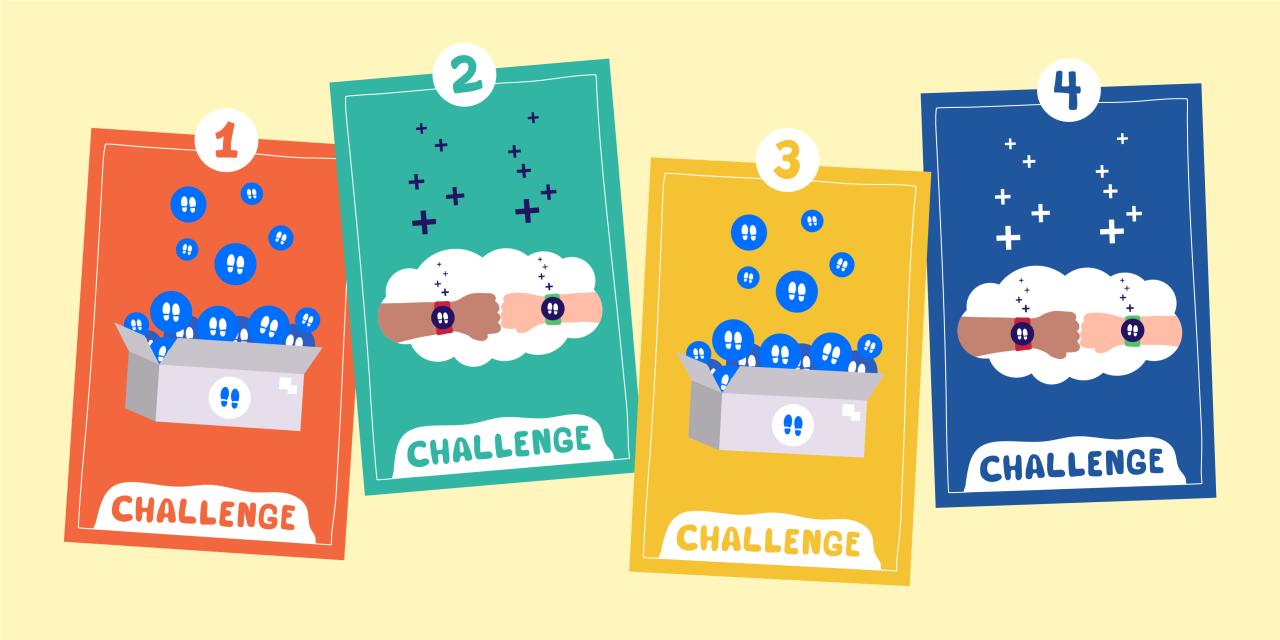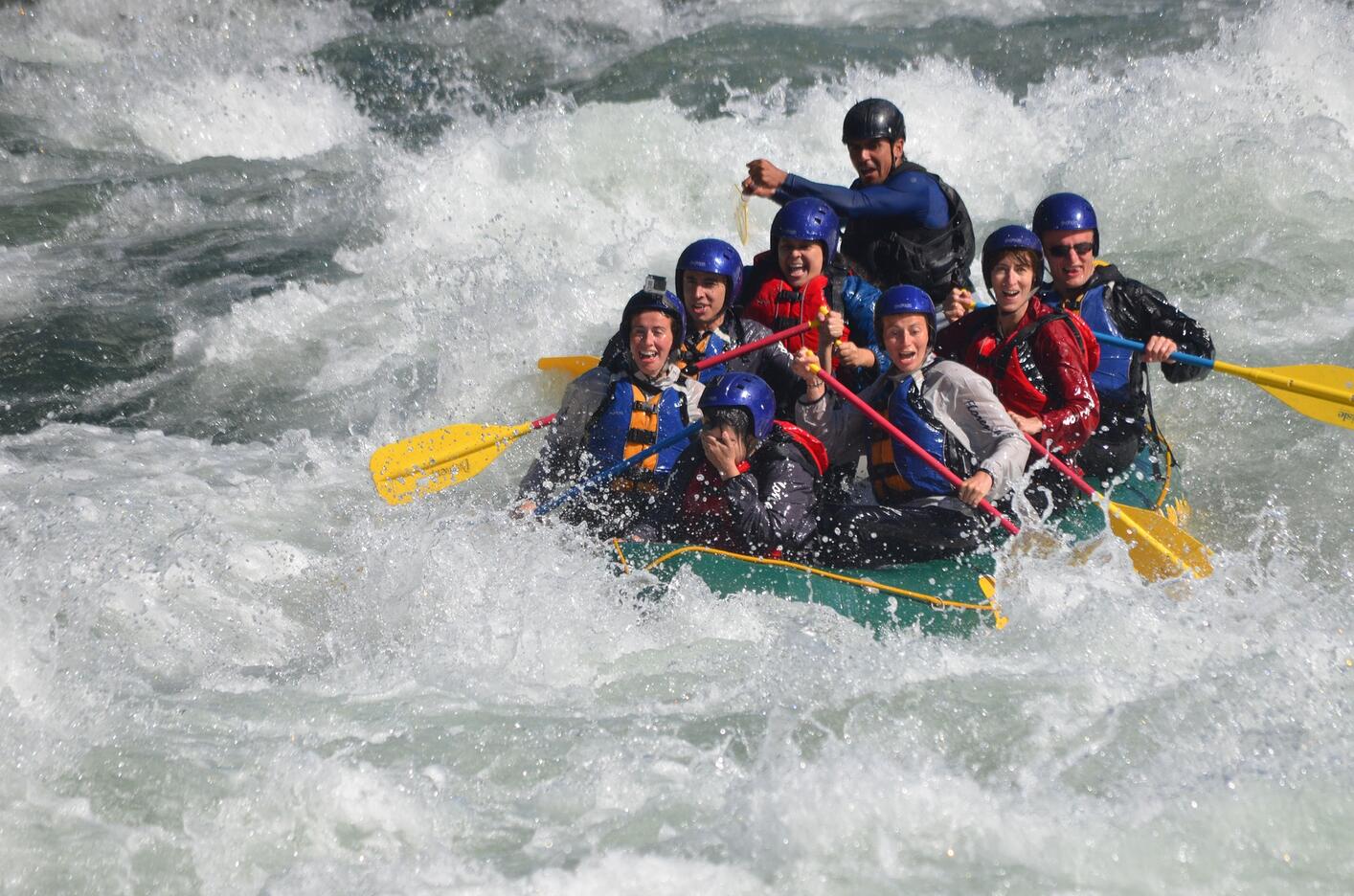
How To Organize Step Challenge at Work?
Just a few years ago, an employer-provided health program was just a nice-to-have welfare initiative. But recent research shows that today, 40% of employees are more loyal to their employer if they feel that the benefits it offers have a positive impact on their lives. Is it more work behind the table, awareness, or an increasing amount of people, who own activity devices? At the end of the day it doesn't matter, but what does, is the fact that physical activity is getting more important for your employees.
Table of Contents
Fitness Challenges You Can Do at Your Job
Sometimes it may be hard to create that personal level connection between different teams and departments. Especially when these are located in different countries or just in a big corporate. At that moment healthy competitions step up – they are designed to increase employee engagement and participation.
In YuMuuv, we have created a lot of different challenge types, just to keep your employees having fun for longer. Starting with a regular walking challenge or activity formula one, where you can see different fitness levels. Also, you can make all the challenges either in individual, collective or consistent perspective. We have written a whole blog post about these so you can check the annual wellness plan example with different challenge options out here.

Features That Help To Create a Virtual Activity Challenges
Step challenge isn't just comparing how many steps someone is doing - it's to increase health and wellbeing. It's about creating that culture at work, while we spend most of our days there. We have heard a lot that human resources managers have tried to do a step challenges in an excel sheet. Still, there are some simple reasons, why they chose to join YuMuuv.
In Excel, everyone have to insert their daily steps manually, while in YuMuuv it's an automatic process and can't come up with topics like cheating. Also, people want to see the ranking - it motivates them to do that extra daily walk or morning run. We have even examples when teams decided to do the active meetings, so during the meeting, they are walking around or even just standing.
Also people like variety - just counting steps for a year isn't attractive, create challenges. Challenges create that bond between people, but also the excitement to push yourself.

How To Make Your Office Step Challenge Work?
1. Plan
- When do you want to start? We recommend you to not pick a period full of holidays or extremely busy periods. On the other hand do you have some upcoming team event? If yes, it's amazing time to introduce new workplace step challenge to your employees.
- Which teams you want to make? Are teams as departments or by countries? Make the teams so when employees are signing up, they already can choose the right team.
- Where do you want that communication to take place? If your company is using Slack or some other platforms, where people can send pictures and motivate each other, use that! Make a channel there for active people.
- Is there a prize? What's the budget for that? Who will get it?
Tip: Don't only consider to give a prize for the best participant/team. To get better engagement, communicate the prize will be drawn between all participants. So even those, who are behind, have motivation to keep going.
2. Make These Steps
- About a week before activity challenge is starting, communicate it to everyone. Make sure you get the management on board! They are the role models for other employees.
- During the office step challenge, keep the communication alive. Keep participants active sharing stories and good practices. That's why good communication platform is important!
3. Reward
- It's time to make conclusions. Who did the most steps? Who was the most active team? Who won the prize?
- When your next office fitness challenge will take place?

Why YuMuuv?
In YuMuuv we have made managing the challenges very simple for you. Starting with admin manuals for you to navigate easily in the app and user manuals to get your employees fast on board. In addition, communication templates with important information for you to send out and the full annual plan you can insert all in once, just in 10 minutes.
We have customer support and help center so you don't have to deal with employee's problems or technical questions. We have an automatic ranking sheet about your employees, but also with all the companies that are moving with YuMuuv. And a lot more just to help you enjoy that journey with others as well with minimal managing effort!
What Is the Best Way to Create a Step Challenge?
1. What Is the Purpose of Organizing the Step Challenge?
There are a variety of motivations to participate in this challenge. Often, first inspiration comes in the form of a favorable testimonial about someone else's successful experience. Although there are many reasons why you can end up opting to take up the task on your own, one of the most compelling is the desire to boost the health of the employee or a feeling of team togetherness. As a result, it is critical that you have a clear understanding of your motivation. This is the only method to assess and achieve success.
If you want to implement a step challenge in order to boost team health, you should establish reasonable expectations for your participants. A short-term endeavor will not be sufficient to bring about a long-term lifestyle adjustment. While this one challenge may serve as a life-changing starting point for certain people, more is required in order to influence the culture of the organization and produce long-term effects (an ongoing wellness program).
In many circumstances, however, the objective is to establish a cohesive experience and a sense of belonging among the team members. The popularity of gathering steps may be attributed to the fact that it is a basic activity that does not need the development of any particular sports aptitude or expertise. In any case, it is important to note that the step challenge is not directly tied to the tension associated with accomplishing professional duties; rather, it serves to revitalize the team's relations by providing a good distraction from the job at hand.
When defining objectives, it is always feasible to begin with a one-time challenge and, based on the feedback gained, develop a better strategy for the execution of long-term solutions. It is critical, however, to establish a top priority for oneself in this regard. As a final point, the common denominator of the large picture is that the organizer of each step challenge wants to see that the experience makes people more engaged, more happy, and more engaged.

2. Who Is Participating in the Step Challenge?
When developing a challenge, it is critical to consider who you want to include in the process. Is it a corporation as a whole, a small team, or an undefined set of individuals that do not have a working connection with one another? Having a thorough understanding of the individuals who will be taking part in the challenge is a necessary prerequisite for its effective planning and communication to occur.
The issue is not just about whether or not a certain individual will participate, but also about whether or not the challenge will take place at the level of individuals, groups, or a collective in the first place. One does not rule out the other, but it does assist to narrow the field of possibilities. For example, when an individual step challenge takes place, the numbers of people who participate and surpass the target become more essential, while the aggregate statistics of the company as a whole become less significant.
As a result, when groups are central to a step challenge, the metrics that are relevant to the organizer shift as a result. Example: the proportion of participants from one department or group vs the average participant are both critical metrics to track and analyze. When it comes to building the feeling of togetherness among members of a team, the group challenge is often effective; nevertheless, it is less effective for the team as a whole.
The collective task, on the other hand, is to adopt a different strategy, concentrating on advancing as a single unit. In this scenario, it is preferable to attach a defined aim to a quantifiable and comprehensible action, rather than vice versa. When traveling from point A to B, for example, the measured steps are transformed into a gift to a certain charity. It is true that development may be assessed even in this situation, but it is no longer the most important factor.

3. What Is the Goal of the Step Challenge and How Long Will It Last?
Setting a target for a step challenge is, without a doubt, dependent on the focus group mentioned in the preceding paragraph. However, it is a good idea to keep in mind that the average number of steps taken by a person per day is estimated to be 6,886 steps per person each day (this number varies greatly depending on location, gender, age, and other characteristics). In other words, the remainder of the computations should be utilized as a starting point. A delicate balance must be struck between creating a goal that is affordable while still being effort-oriented, keeping in mind that there are many different persons involved.
As soon as a target is established for a precise number that participants are aiming towards, the large number of individuals with a variety of talents and motives comes to the forefront of the discussion. Of course, several distinct problems may be produced at the same time, but this requires very well-thought-out communication that does not compromise the group's cohesiveness.
Many people believe that the aim of a step challenge can only be a certain amount of steps. This is a widespread mistake. In fact, one method of completing a step challenge is to collect days instead of steps each day. The sub-goal is broken down into stages, and if it is met or surpassed, one full day is recorded. Rather than the number of days spent in a particular time exceeding the sub-target, the major goal should be the number of days spent in a given period exceeding the main goal. This turns the emphasis away from the diet and toward a healthier lifestyle and consistency.
If you're talking about short-term issues, their timeframe is generally between a few weeks and a few months. Certainly, it is possible to create objectives that will last just a single day or for a whole year, but in the grand scheme of things, the challenge time should be precisely as long as the organizer is able to keep the participants informed and motivated. Based on the initial goal, this is in turn based on another. According to statistical data, the most prevalent difficulties last one calendar month.

4. What Is the Procedure for Data Collection and Support?
There are two primary methods for contesting the actions used to obtain data. Manual data input is used in the first instance, while automated data traffic is used in the second. A number of activities, such as the step challenge, might benefit from manual data collecting. For more information on these activities, please see our challenge ideas page.
The reason for this is because, even if manual input is permitted, persons must still measure their movement in order to arrive at objective statistics, which is not feasible. As a result, finding a solution that lowers the inconvenience of individuals monitoring their steps and communicating that information makes perfect sense.
Today, there are so many various gadgets that measure the steps walked that the simple availability of a smartphone should not be an impediment to anyone's ability to track their progress. While the technology is not without flaws, it is improving in accuracy with time and making it simpler to take on the task step by step as time goes on. All of this, of course, does not exclude the employment of an optional additional tool to convert steps, such as for wheelchair users, if necessary.
However, regardless of how you assess the data in a step challenge, it is critical to consider who will assist the participants in the event of a difficulty. The notion that there are no impediments implies that the organizer completes the task himself. This is one action that is often overlooked, and it is also the last thing the challenge's organizer would want to be responsible for. Realistically, this will need the assistance of a platform partner.
The organizer's stress level will be greatly decreased if the participants are aware of who to call in the event of a probable technical or other problem during the event. This does not rule out the possibility of receiving questions for the challenger; nevertheless, the assistance of the service provider will allow the organizer to focus on the issues that are most essential to him.

5. What Methods Are Used to Identify and Reward Successful Participants?
The recognition of individuals who take part in the challenge of a step increases the number of people who take part in the challenge and, at the same time, enhances the likelihood of achieving the original objective. There are a variety of methods for recognizing participants, and each method should be chosen in accordance with the original aim. If the emphasis was originally on the person, for example, this is an excellent time to recognize and congratulate everyone who was successful in achieving the intended result.
Of doubt, financing has an impact on recognition, but it is not necessarily necessary for recognition to be linked to funding. Examples include vocal expressions or, when applied to a group effort, the delight of giving is frequently greater than the joy of getting it (all participants know that the prize goes to those in need). When working with a restricted budget, it is frequently a good idea to speak with other departments to see if they have a resource for souvenirs with corporate logo, for example. In a limited budget setting, it is often a good idea to interact with other departments.
One thing that is not encouraged is awarding rewards to just a small number of the most active movers in the competition. This plainly results in the challenge being transformed into an event where the act of participating itself is no longer of high significance, thereby decreasing the overall number of participants. There is a straightforward solution to this problem: distribute lottery rewards among individuals who reach their aim. In this approach, the major emphasis is not directed at the one and only active participant. Of course, it is possible to mix any or all of the models described above.

6. What Methods Are Used for Communication and Feedback?
For the step challenge, it is unquestionably necessary to have a communication strategy in place. Keep in mind that this must take place before to, during, and after the challenge is completed successfully. If the firm is large enough, the dissemination of information to participants should begin at least two weeks before their scheduled participation. If at all feasible, it is beneficial to enlist the assistance and knowledge of your spouse in this endeavor.
Because participation is a high priority, information about how to participate must be straightforward and explicit. You may always experiment with ideas that make registration a stand-alone task, such as the extra value of a team that has the highest attendance, or other similar approaches.
Because the corporation use a variety of internal communication platforms, it is critical to consider how information is disseminated within the organization. While it is beneficial to provide an overview of progress in a broader medium and as aesthetically as possible, a more thorough and up-to-date dialogue should take place inside the organization.
It would be beneficial for participants to understand what is going on and why after the step challenge has concluded. Pay attention to those who took part in the feedback and provide suggestions for the next stages based on their responses. Additionally, consider if and how you would be able to share the challenge of completing the successful step with others outside the circle of participants in the form of a visual summary.

7. Which Partner Platform Should You Utilize?
Clearly, the antiquated practice of having workers spend their precious time inputting data relating to mobility into Excel will no longer be effective by 2022. However, this leaves the last, and probably most significant, option in the hands of the challenge's organizer - finding a partner with an appropriate platform with whom to address all of the concerns coming from the challenge's organizing and to ensure that it is properly implemented.
To pick from, there are many alternative options and partners to consider. It is critical to discover the most value for your money within your financial constraints. Furthermore, having more alternatives does not always translate into a better answer. Due to the fact that participants' experience to technology differs, it is common for excessive new features to be added to increase the complexity. However, it should be mentioned that YuMuuv is the author of the post, hence the following is a skewed depiction of the three separate providers.
In order to begin, let us consider the Wellable option. Unquestionably, it is a well-developed organization. By using the platform they provide, you may be certain of receiving a high-quality experience; but, you must be prepared to pay a hefty fee for it! Prices for a reliable platform, a single-step challenge, and full-service start at $5,000. For example, according to simple math, a firm with 100 members earns $50 each person, not to mention smaller businesses. These are figures that only a small number of people are willing to risk when there are many times cheaper alternatives available on the market, but the quality is good and assured.
MoveSpring is the next major player to emerge on the scene. You may be certain that you will get a high degree of quality from them as well. In addition, at first look, their pricing policy does not seem to be prohibitively expensive, but it is vital to note that a $1,000 platform charge is added to the final price. A team of 50 people will have to pay $28 per employee, rather than $8 per employee, in order to get the same result. Many people may be unable to access this as well, not to mention all of the other services that are charged separately.
YuMuuv is the only one remaining. Here is a pricing strategy that is quite straightforward. For a one-time challenge, there is a set fee of $8 per employee, and for a long-term solution, there is a fixed charge of $2 per employee every month. There are no hidden fees, and each and every client is assured to work with a professional customer experience manager. Of course, there are even more affordable alternatives available on the market, but few people would want to save money on services, for example, if someone is in desperate need of assistance (because it also affects the success of the step challenge).

8. Summary
So if you are as excited as we are to move together, then contact us and let's get these steps done!
